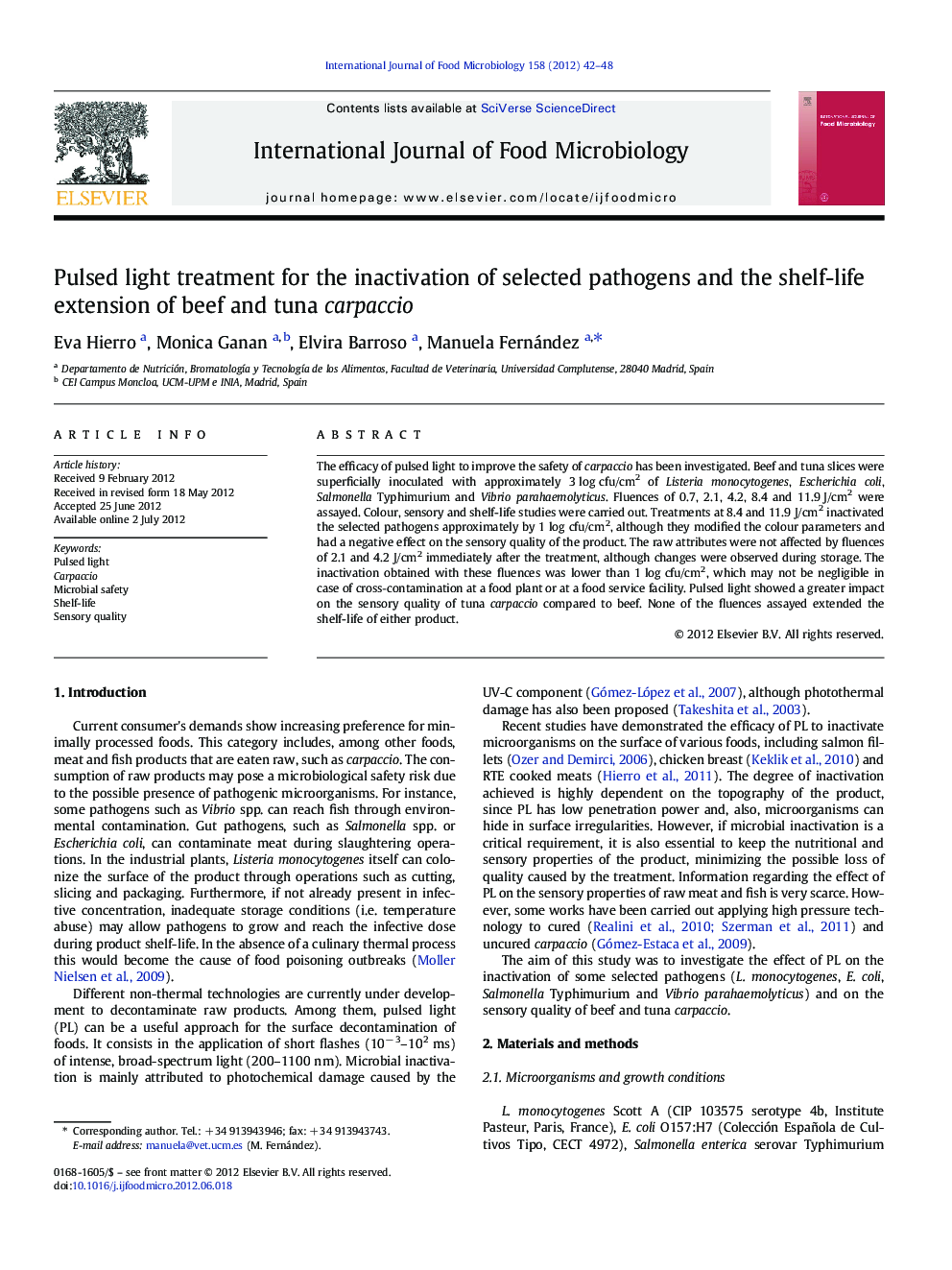| Article ID | Journal | Published Year | Pages | File Type |
|---|---|---|---|---|
| 4367409 | International Journal of Food Microbiology | 2012 | 7 Pages |
The efficacy of pulsed light to improve the safety of carpaccio has been investigated. Beef and tuna slices were superficially inoculated with approximately 3 log cfu/cm2 of Listeria monocytogenes, Escherichia coli, Salmonella Typhimurium and Vibrio parahaemolyticus. Fluences of 0.7, 2.1, 4.2, 8.4 and 11.9 J/cm2 were assayed. Colour, sensory and shelf-life studies were carried out. Treatments at 8.4 and 11.9 J/cm2 inactivated the selected pathogens approximately by 1 log cfu/cm2, although they modified the colour parameters and had a negative effect on the sensory quality of the product. The raw attributes were not affected by fluences of 2.1 and 4.2 J/cm2 immediately after the treatment, although changes were observed during storage. The inactivation obtained with these fluences was lower than 1 log cfu/cm2, which may not be negligible in case of cross‐contamination at a food plant or at a food service facility. Pulsed light showed a greater impact on the sensory quality of tuna carpaccio compared to beef. None of the fluences assayed extended the shelf-life of either product.
► Pulsed light was tested for preservation of beef and tuna uncured carpaccio. ► The inactivation of selected pathogens was about 1 log cfu/cm2 at 8.4 and 11.9 J/cm2. ► Fluences of 2.1 and 4.2 J/cm2 maintained the sensory quality.
